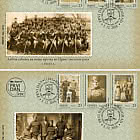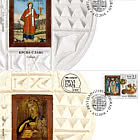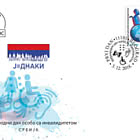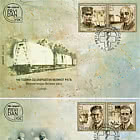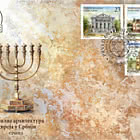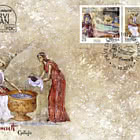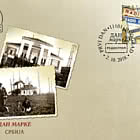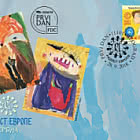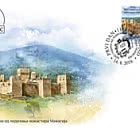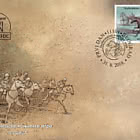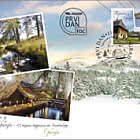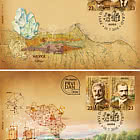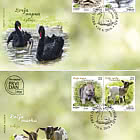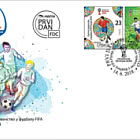2018150th Anniversary of the Construction of the Church of the Holy Emperor Constantine and Empress Helen in Crvena Jabuka near Vlasotince - First Day Cover
2018 150th Anniversary of the Construction of the Church of the Holy Emperor Constantine and Empress Helen in Crvena Jabuka near Vlasotince - First Day Cover for only GBP £0.40
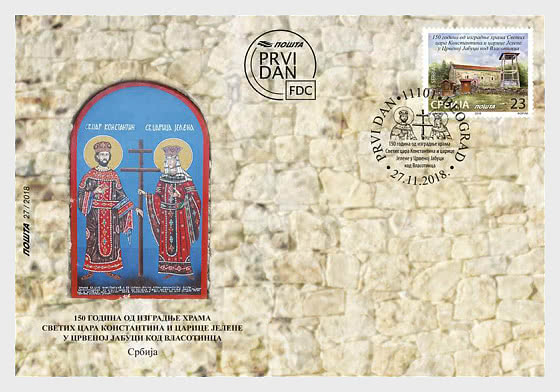
- 27.11.2018
Crvena Jabuka is a mountain village located in the valley of the upper course of the Tetošnica river, huddled between the Tumba, Talambas and Crni Vrh mountains, near the border with Bulgaria in the southeastern part of the Babušnica municipality.
As tradition has it, the settlement was built in the 12th century on the remains of a Latin settlement and it is one of the oldest in the Lužnica region. Until the liberation from the Turks in 1877, the village belonged to the Trn county, afterwards to the Vlasotince county and as of 1900 to the Lužnica county in the Babušnica municipality.
Until 1868 the village did not have a church because the Turks had burned down the church at the village cemetery twenty years before. At that time Crvena Jabuka was economically developed and densely populated, so on 3 October 1867 sultan Abdulaziz allowed for the church to be build, which was done in less than a year in the village centre, near the village school. During the digging of the foundation, a construction which was found was considered to originate from the period of the emperor Constantine, so the church was named after him and empress Helen. It was finished and consecrated on 3 June 1868, since when St Constantine’s Day is celebrated.
The Holy Gospel, which is now kept in the National museum of Babušnica, was donated to the church by a priest from Strelac, Milan Rakić and a merchant from Crvena Jabuka David Petković, the envoy in the Assembly in 1878. While visiting the newly liberated parts of the country on 12 October 1892, king Alexander Obrenović donated a large bell to the church and a small one to the school in Crvena Jabuka.
The church iconostasis was carved in wood, and there is a cross in the front with the year of the construction engraved. Near the church there is a memorial named ’’A Flame in the Stone’’, built in 1989 in the memory of all the residents of Crvena Jabuka that had fallen in the liberation wars from 1877 to 1941.
The first birth registration in the church books, which are kept until today, was done in 1879, so these books represent a significant source of information about the families of Crvena Jabuka of that time. The church was renovated in 2011, and the 1700th anniversary of the Edict of Milan was solemnly celebrated there on 3 June 2013.
Expert collaboration: Homeland citizens’ Association ’’Crvena Jabuka”, Odžaci.
Artistic realization of the stamp: Miroslav Nikolić.
WOPA+ recommended stamp issues
| Music Giants VII - Iron Maiden |
| Issued: 12.01.2023 |
| ›Great Britain |
| Effigy of H.S.H Prince Albert II - Green Letter Rate |
| Issued: 03.01.2023 |
| ›Monaco |
| Year of the Rabbit |
| Issued: 05.01.2023 |
| ›Guernsey |
| Dimitrie Cantemir, 350th Anniversary of his Birth |
| Issued: 16.01.2023 |
| ›Romania |
| Medicinal Plants |
| Issued: 03.01.2023 |
| ›Romania |
| Honour Guard of the President of the Slovak Republic |
| Issued: 02.01.2023 |
| ›Slovakia |
| Veteran Tractors |
| Issued: 04.01.2023 |
| ›Aland Islands |
| St. Elizabeth’s Church in Parnu |
| Issued: 06.01.2023 |
| ›Estonia |













